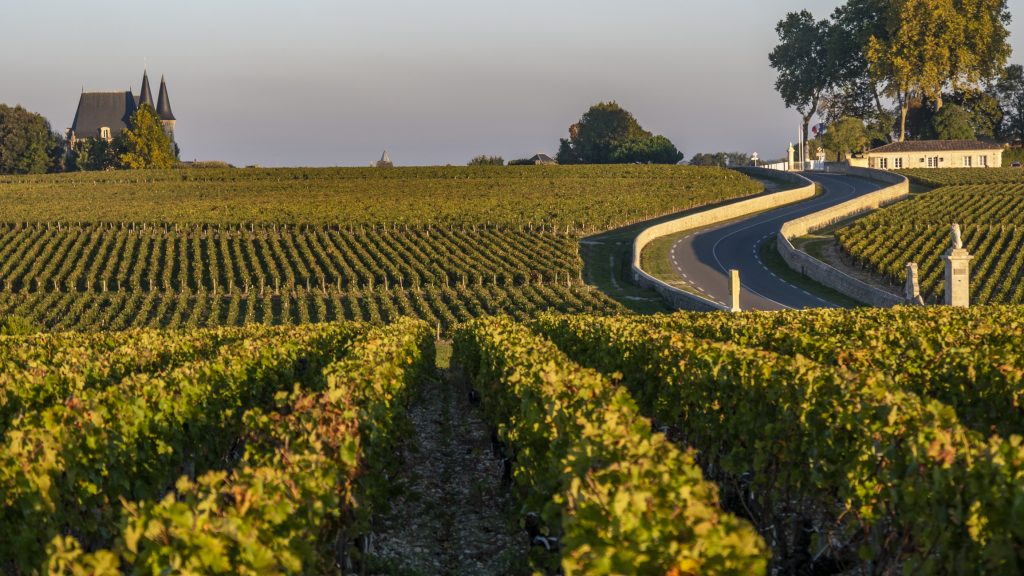Bordeaux 2022 en primeur: Saint Julien, low yields but ‘excellent’ wine
By Colin HayColin Hay continues his journey tasting the appellations of Bordeaux 2022, he heads down the Gironde to St Julien, finding truly excellent wines and a region that is remarkably homogeneous.

As we know already the meteorological data for Saint Julien is very similar to that from Pauillac – not least in that, at least in the form that I have it, it comes from the same meteorological station.
|
Pre-budburst (Nov-March) |
Véraison to harvest (August-October) |
Total | |
| Margaux | 381 (-22.8%) | 58.5 (-53.0%) | 802 (-12.3%) |
| St Julien | 364 (-25.0%) | 61.3 (-47.7%) | 780 (-12.2%) |
| Pauillac | 364 (-25.0%) | 61.3 (-47.7%) | 780 (-12.2%) |
| St Estèphe | 415 (-14.6%) | 74.4 (-40.3%) | 889 (-1.1%) |
| Pessac-Léognan | 445 (-8.4%) | 57.7 (-50.7%) | 764 (-14.6%) |
| St Emilion | 558 (+14.8%) | 67.7 (-44.0%) | 886 (-1.9%) |
| Pomerol | 541 (+9.7%) | 51.2 (-57.5%) | 871 (-3.9%) |
Table 1: Rainfall during the vintage (mm, relative to 10-year average)
Source: calculated from Saturnalia’s Bordeaux 2022 Harvest report
As for Pauillac, then, the data that we have suggests that Saint Julien experienced very little rainfall in the winter preceding the growing season (less, in fact, that another of the leading appellations) and that it saw only 50% or so of average annual rainfall in the period between véraison and the harvest. And only Pessac-Léognan and Margaux (by a whisker) experienced lower total annual rainfall.
This helps to explain the low average vineyard yields for the appellation which appear below.
| 2018 | 2019 | 2020 | 2021 | 2022 | 10-year average | Relative to 10-year average (% change) | |
| Margaux | 37.4 | 49.2 | 36.3 | 38.6 | 31.3 | 39.7 | -21.2 |
| St Julien | 42.6 | 45.5 | 34.3 | 35.2 | 34.3 | 40.1 | -14.5 |
| Pauillac | 38.5 | 46.7 | 37.4 | 35.1 | 34.8 | 39.7 | -12.3 |
| St Estèphe | 44.6 | 49.7 | 41.2 | 40.7 | 31.5 | 43.4 | -27.4 |
| Pessac-Léognan | 36.9 | 47.2 | 34.6 | 30.7 | 35.7 | 38.5 | -7.3 |
| St Emilion (GC) | 39.7 | 43.0 | 36.7 | 27.5 | 41.2 | 37.2 | +10.7 |
| Pomerol | 36.2 | 43.0 | 39.8 | 28.9 | 32.3 | 36.1 | -10.5 |
Table 2: Average vineyard yield by appellation (hl/ha)
Source: calculated from Customs data compiled by the CIVB Service Economie et Etudes
Indeed, as Table 2 shows, St Julien’s vineyard yields were even lower than those for Pauillac – though only marginally so – at 34.3 hl/ha (almost 15 per cent below the 10-year average).
But, as in Pauillac and however paradoxical it might seem, that helps explain the quality of the vintage. For the effect of the incessant and intense drought and, above all, its early onset was to produce a small crop of perfectly ripe and highly concentrated grapes picked under no weather-related pressure in rude health.
Unremarkably, then, and again as in Pauillac, the wines themselves are truly excellent and remarkably homogeneous.
Partner Content
Rivalling the first growths in quality is a truly exceptional Léoville Las Cases, a candidate for the left-bank wine of the vintage. I have simply never tasted a more elegant and refined Las Cases and such is the quality of the tannins that you would have no idea of (considerable) IPT count.
Gruaud Larose is on staggering form and the 2022 is every bit as good as the truly exceptional new benchmark vintage for this wine that is 2020. It is my other coup de Coeur of the appellation in this vintage.
But Ducru-Beaucaillou and Léoville-Barton, albeit in very different styles, have also made truly exceptional vins de garde in this vintage.
In fact all of the classed growths of the appellation have excelled as my detailed tasting notes below attest.
Choosing between them is very much a matter of personal taste as they all have much to offer. Branaire Ducru is for me perhaps the most improved. Along with Beychevelle, Clos du Marquis and Talbot is the most expressive of its Saint Julien identity and terroir.
Highlights in 2022
Best of the appellation:
- Léoville Las Cases (98-100)
Truly great:
- Gruaud Larose (96-98+)
- Ducru Beaucaillou (96-98)
- Léoville-Barton (96-98)
- Léoville-Poyferré (95-97+)
- Beychevelle (95-97)
- Branaire Ducru (94-96+)
- Langoa Barton (94-96)
- Talbot (94-96)
- Clos du Marquis (93-95+)
Value picks:
- Lagrange (93-95)
For full tasting notes, click here.
Please click link for db’s 2022 en primeur vintage report, along with appellation-by-appellation reviews (links updated as they become available) on Margaux, St Julien, Pessac-Leognan & Graves rouge and blanc, St Estèphe & Haut-Medoc, Pauillac, Pomerol, Saint-Émilion and Sauternes.
Read more:
Bordeaux 2022: Miraculous majesty (thedrinksbusiness.com)
Bordeaux 2022 vintage report: The questions still to be answered (thedrinksbusiness.com)
Related news
Should Rioja increase its focus on white wine?
The 'family spirit' behind Champagne Gardet's 130th anniversary




